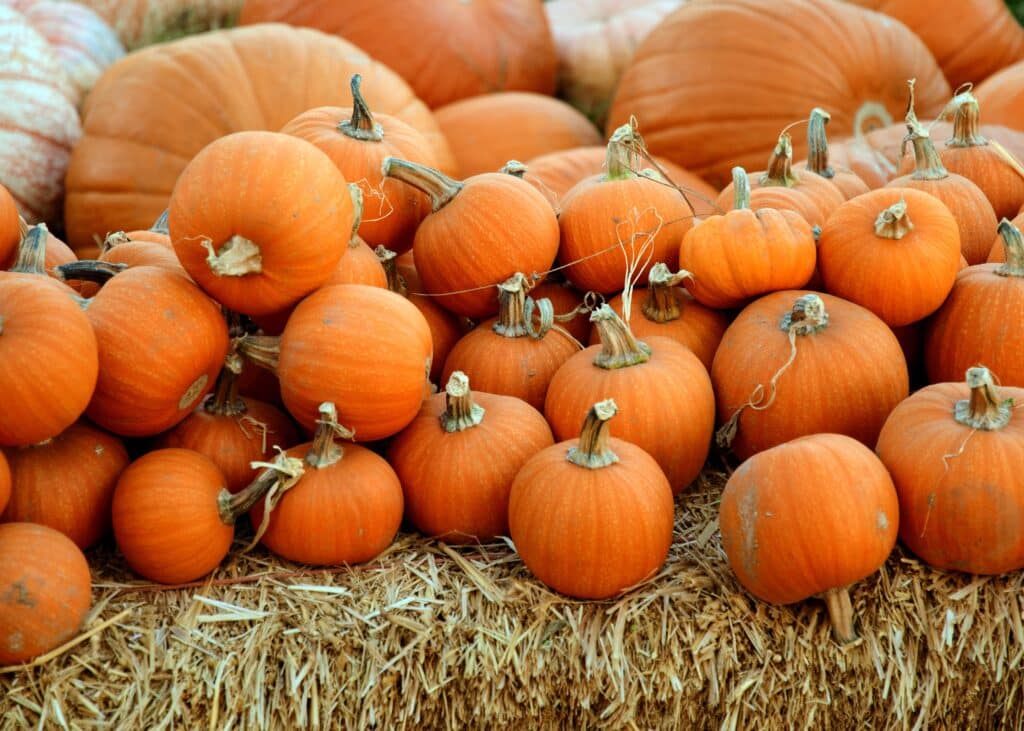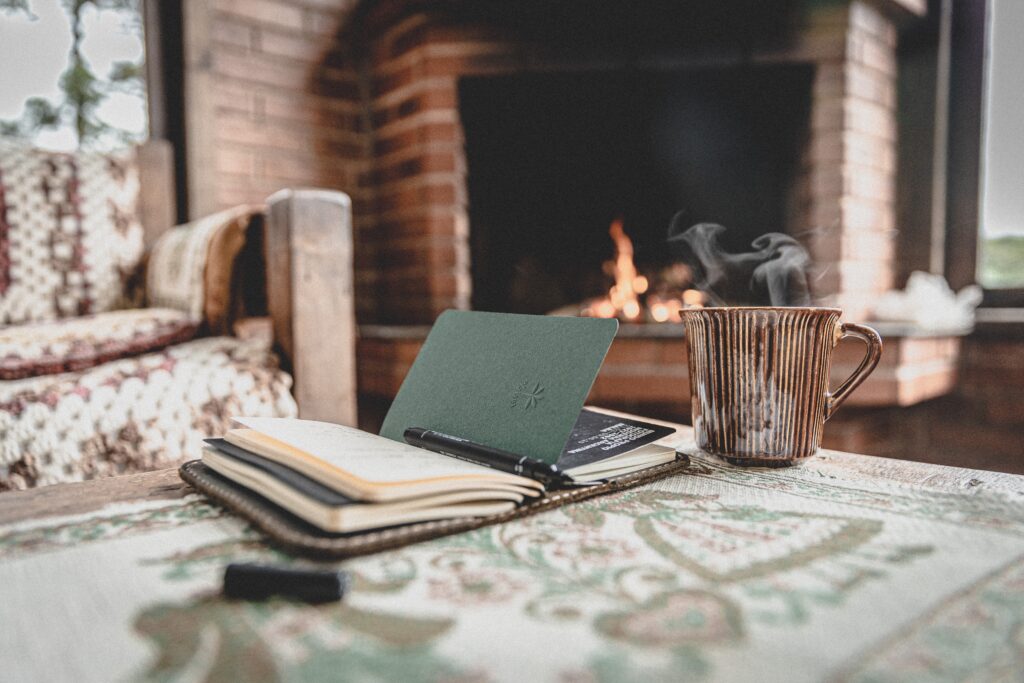
98 Fall Words in Spanish [With Audio]
You won’t find your typical autumnal characteristics in all parts of the Spanish-speaking world.
But places like Spain and Chile boast beautiful fall colors and falling leaves during the season.
And if you’re learning Spanish, knowing how to talk about autumn will likely come in handy.
In this post, you’ll get 98 words and phrases for talking about fall in Spanish.
Learn a few more each day and you’ll soon be chatting like a native about the beauty of the season!
Contents
- Fall Nouns in Spanish
- Spanish Fall Adjectives
- Spanish Verbs for Fall
- Fall Weather Expressions in Spanish
- Spanish Phrases About Autumn
- And One More Thing…
Download: This blog post is available as a convenient and portable PDF that you can take anywhere. Click here to get a copy. (Download)
Fall Nouns in Spanish

Here are some essential nouns for the fall season, with their respective articles:
| Spanish | English |
|---|---|
| el otoño | fall |
| la estación | season |
| la lluvia | rain |
| la niebla | fog/mist |
| la cosecha | harvest |
| la vendimia | grape harvest/vintage |
| el maíz | corn |
| la escarcha | frost |
| la hoja / las hojas | leaf/leaves |
| la madera | wood |
| el barro / el lodo | mud |
| el follaje | foliage, canopy |
| el bosque | forest |
| la seta | mushroom |
| la castaña | chestnut |
| la bellota | acorn |
| la calabaza / el zapallo | pumpkin |
| la tarta de manzana
/ el pastel de manzana
| apple pie |
| el pavo | turkey |
| la piña | pine cone |
| el espantapájaros | scarecrow |
| el cuervo | crow, raven |
| el resfriado | cold, sniffles |
| la manga larga | long sleeve |
| una camiseta de manga larga | a long sleeve T-shirt |
| camisetas de manga larga | long sleeve T-shirts |
| las botas | boots |
| la bufanda | scarf |
| el sombrero | hat |
| la gorra | cap |
| el suéter | sweater |
| la chaqueta | jacket |
| el abrigo | coat |
| la hoguera / la fogata | bonfire |
| la chimenea | chimney |
| El Día de Todos los Santos | All Saints Day |
| El Día de Acción de Gracias | Thanksgiving |
| el equinoccio de otoño | autumn equinox |
Spanish Fall Adjectives

Remember that Spanish adjectives have to agree in gender and number with the noun they modify and usually go after the noun. For example: una noche fría (a cold night), tres calabazas naranjas (three orange pumpkins).
| Spanish | English |
|---|---|
| otoñal | autumnal |
| colorido | colorful |
| rojo | red |
| amarillo | yellow |
| marrón | brown |
| ámbar | amber |
| dorado | golden |
| naranja | orange |
| ventoso | windy |
| fresco | cool |
| lluvioso | rainy |
| nublado | cloudy, overcast |
| escarchado | frosty |
| acogedor | cozy |
Spanish Verbs for Fall

Here are some verbs you can use to talk about the activities and actions of the fall season. Don’t forget to review your Spanish verb conjugations if needed!
| Spanish | English | Example |
|---|---|---|
| llevar / usar | to wear | Llevo una chaqueta de cuero. (I'm wearing a leather jacket.) |
| preparar / prepararse | to prepare, to get ready | Tenemos que preparar la comida para el Día de Acción de Gracias. (We have to prepare the food for Thanksgiving.) |
| cambiar | to change | Todo cambia a nuestro alrededor entre las estaciónes. (Everything changes around us between seasons.) |
| dar un paseo | to go for a walk | Demos un paseo por el parque. (Let's take a walk in the park.) |
| caer / caerse | to fall, to fall down | Las hojas caen en otoño. (The leaves fall in autumn.) |
| sentarse | to sit down | Podemos sentarnos junto a la chimenea y jugar un juego de mesa. (We can sit by the fireplace and play a board game.) |
| calentarse | to warm up | ¿Quieres una taza de cacao para calentarte? (Do you want a cup of cocoa to warm up?) |
| quedarse en casa | to stay home | Voy a quedarme en casa este fin de semana. (I'm going to stay home this weekend.) |
| volver a la escuela | to go back to school | Los niños vuelven a la escuela en septiembre. (The kids go back to school in September.) |
| migrar | to migrate | Muchas aves migran hacia el sur en otoño o invierno. (A lot of birds migrate south in the fall or winter). |
| encender (la chimenea, una hoguera) | to light/to ignite (a fire in the fireplace, a bonfire) | En otoño, nos encanta encender la chimenea y leer un buen libro. (In the fall, we love to light the fireplace and read a good book.) |
| arroparse / abrigarse | to bundle up | Cuando hace frío, es importante arroparse bien antes de salir.
(When it's cold, it's important to bundle up well before going out.) Los niños no se abrigaron bien y tenían frío. (They kids didn't dress warmly so they got cold.) |
| llover | to rain | Comenzó a llover justo cuando salíamos de casa. (It started raining just as we were leaving the house.) |
| lloviznar | to drizzle/to sprinkle | Lloviznaba mientras paseábamos por el parque. (It was drizzling as we walked through the park.) |
| escarchar | to frost | El frío puede escarchar las ventanas por la mañana. (The cold can frost the windows in the morning.) |
| cosechar | to harvest/to reap | En otoño, los agricultores comienzan a cosechar los cultivos maduros. (In autumn, farmers start to harvest mature crops.) |
| ir a recoger setas | to go mushroom foraging | Los amantes de la naturaleza suelen ir a recoger setas en los bosques durante la temporada. (Nature enthusiasts often go mushroom foraging in the forests during the season.) |
| resfriarse | to get a cold | Siempre me resfrío cuando cambia el clima. (I always get a cold when the weather changes.) |
| tallar calabazas | to carve pumpkins | Vamos a tallar calabazas en la fiesta de Halloween. (We're going to carve pumpkins at the Halloween party.) |
Fall Weather Expressions in Spanish
You can sprinkle these weather expressions into small talk with your Spanish-speaking friends and acquaintances:
| Spanish | English |
|---|---|
| Hace frío. | It's cold. |
| Hace viento. / Está ventoso. | It's windy. |
| Hace fresco. | It's cool. |
| Hace sol. | It's sunny. |
| Hace buen tiempo. | The weather is nice. |
| Hace mal tiempo. | The weather is bad. |
| Hay niebla. | There's fog./It's foggy. |
| Está nublado. | It's cloudy. |
| El cielo está nublado. | The sky is cloudy. |
| El otoño tiende a ser muy nublado. | Fall tends to be very cloudy. |
| Está despejado. | It's clear. (the weather/sky) |
| Está lloviendo. / Llueve. | It's raining. |
| El día está lluvioso. | The day is rainy. |
| Estamos entrando en la época de lluvias. | We're entering the rainy season. |
| Me gustan las noches frescas de octubre. | I like October's cool nights. |
Spanish Phrases About Autumn

Here are some poetic and descriptive phrases you can use to write fall-themed poems or stories in Spanish:
| Spanish | English |
|---|---|
| las hojas cayendo de los árboles | leaves falling from the trees |
| rodeado por la naturaleza | surrounded by nature |
| el aire fresco del bosque | the fresh air of the woods |
| las castañas asadas | roasted chestnuts |
| una bandada decuervos | a murder of crows |
| las mañanas frías | the cold mornings |
| las largas y silenciosas tardes de otoño | the long, silent fall afternoons |
| una bufanda tejida a mano | a hand-knitted scarf |
| una taza de chocolate caliente | a cup of hot chocolate |
| el color dorado de las hojas | the golden color of the leaves |
| el maravilloso atardecer otoñal | the magnificent fall sunset |
| acurrucarse frente a la chimenea | to snuggle up in front of the fireplace |
Thanks to these words and expressions, you’ll be able to talk about fall weather like a real Spanish native speaker.
Remember that learning vocabulary is one of the main pillars of language learning. To build your vocabulary, try to pick a single topic and learn everything possible about it. Take your time, make flashcards and vocabulary lists, and use the FluentU program to learn how to use the vocabulary in context.
FluentU takes authentic videos—like music videos, movie trailers, news and inspiring talks—and turns them into personalized language learning lessons.
You can try FluentU for free for 2 weeks. Check out the website or download the iOS app or Android app.
P.S. Click here to take advantage of our current sale! (Expires at the end of this month)

Download: This blog post is available as a convenient and portable PDF that you can take anywhere. Click here to get a copy. (Download)
And One More Thing…
If you've made it this far that means you probably enjoy learning Spanish with engaging material and will then love FluentU.
Other sites use scripted content. FluentU uses a natural approach that helps you ease into the Spanish language and culture over time. You’ll learn Spanish as it’s actually spoken by real people.
FluentU has a wide variety of videos, as you can see here:

FluentU brings native videos within reach with interactive transcripts. You can tap on any word to look it up instantly. Every definition has examples that have been written to help you understand how the word is used. If you see an interesting word you don’t know, you can add it to a vocab list.

Review a complete interactive transcript under the Dialogue tab, and find words and phrases listed under Vocab.

Learn all the vocabulary in any video with FluentU’s robust learning engine. Swipe left or right to see more examples of the word you’re on.

The best part is that FluentU keeps track of the vocabulary that you’re learning, and gives you extra practice with difficult words. It'll even remind you when it’s time to review what you’ve learned. Every learner has a truly personalized experience, even if they’re learning with the same video.
Start using the FluentU website on your computer or tablet or, better yet, download the FluentU app from the iTunes or Google Play store. Click here to take advantage of our current sale! (Expires at the end of this month.)




